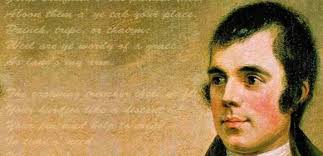St. Andrew’s Day is a Christian holiday celebrated on November 30. Andrew is the patron saint of Scotland and the festival plays a similar role as St. Patrick’s Day for Ireland — it is a day for celebrating Scottish culture.
One of the earliest times St. Andrew was recognized as the patron saint of Scotland was at the signing of the Declaration of Arbroath in 1320. Signed by Robert the Bruce and other Scottish noblemen, the Declaration asserted Scotland’s independence from England.
According to legend, however, St. Andrew became the patron saint of Scotland much earlier, in 832 AD. In a story that resembles the famous tale of Emperor Constantine and the Chi Rho, it is said that an army of Scots was facing an English army when the Scottish king prayed to St. Andrew for help. Seeing a cloud in the shape of the saltire (X-shaped) cross against a clear blue sky, the king vowed that if the Scots were victorious, St. Andrew would be made the patron saint of Scotland. The Scots won the battle, the king fulfilled his promise, and the intervention of St. Andrew has been represented on the Scottish flag ever since.
Among Scots, especially those who are away from their homeland, November 30 is a day for celebrating the best of Scottish culture and cuisine. As one would expect, the focal point of St. Andrew’s Day in Scotland is the city of St. Andrews in Fife, which is about an hour north of Edinburgh. There, throughout “St. Andrew’s Week,” one can attend traditional music concerts, special church services, porridge-making contests, piping contests and ceilidhs, watch fireworks, and visit places that are not normally open to the public, like the Masonic Lodge and the private areas of the famous Royal and Ancient Golf Course. Elsewhere in Scotland, many schools hold a special assembly focusing on the patron saint and Scotland, special events are held at landmarks like the Edinburgh Castle, and friends gather for ceilidhs, haggis suppers, whisky drinking, or other celebrations of Scottish heritage.

